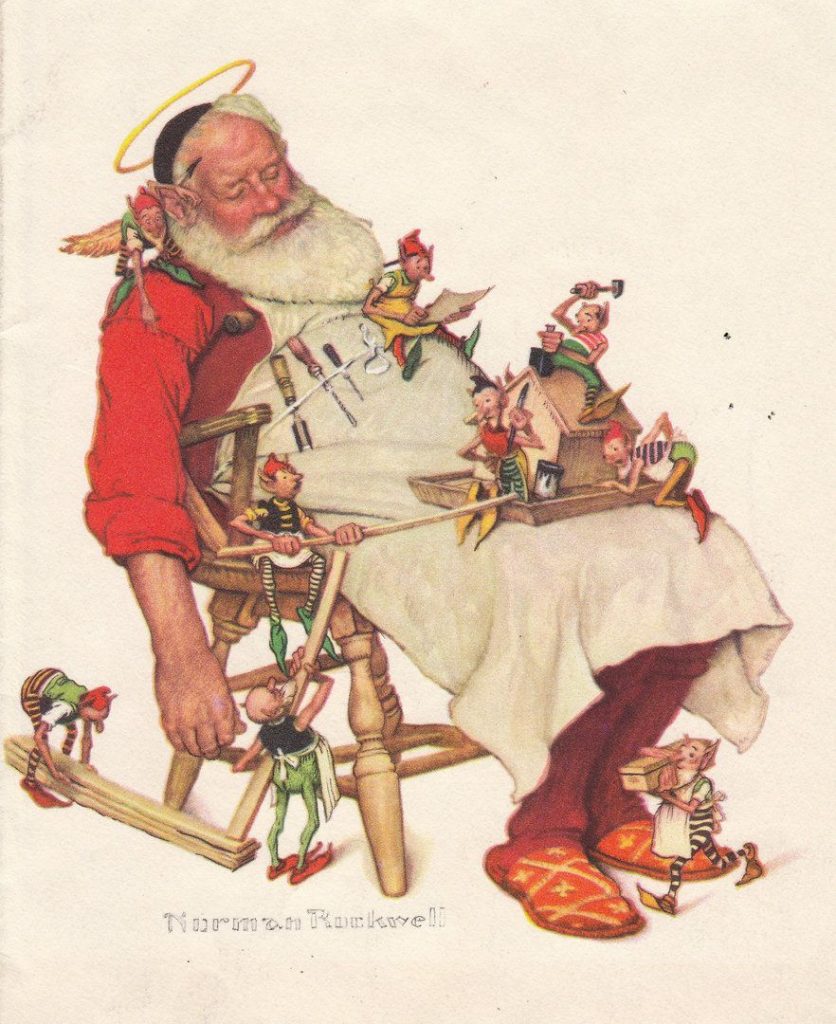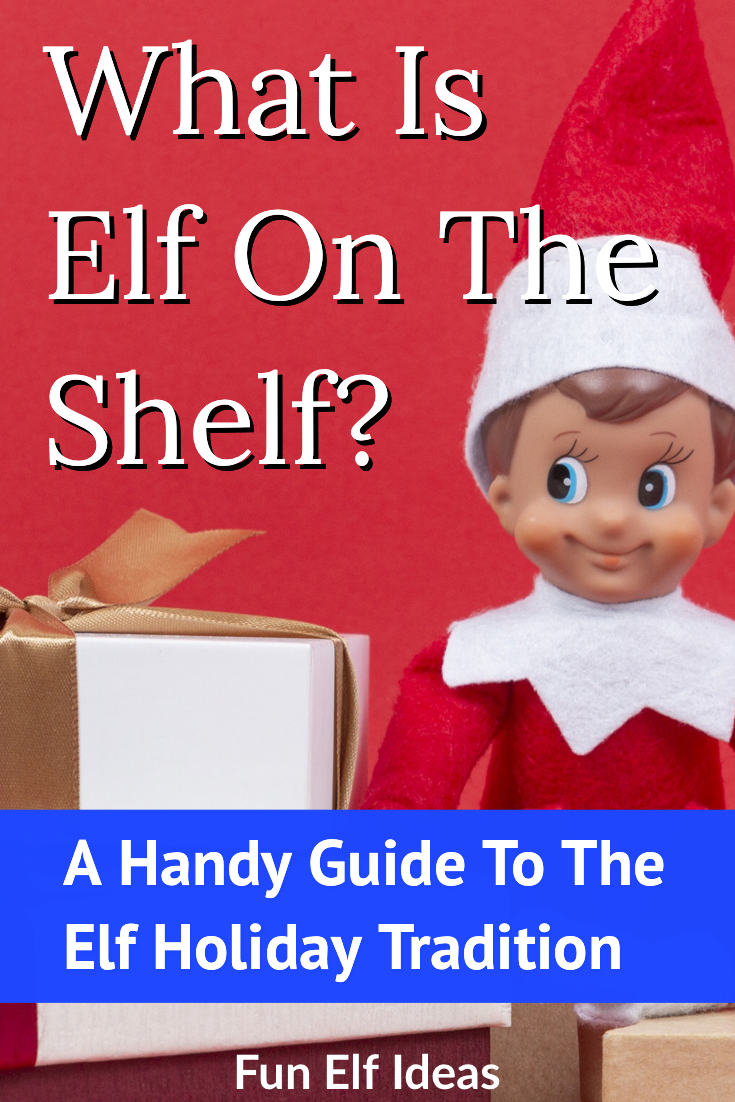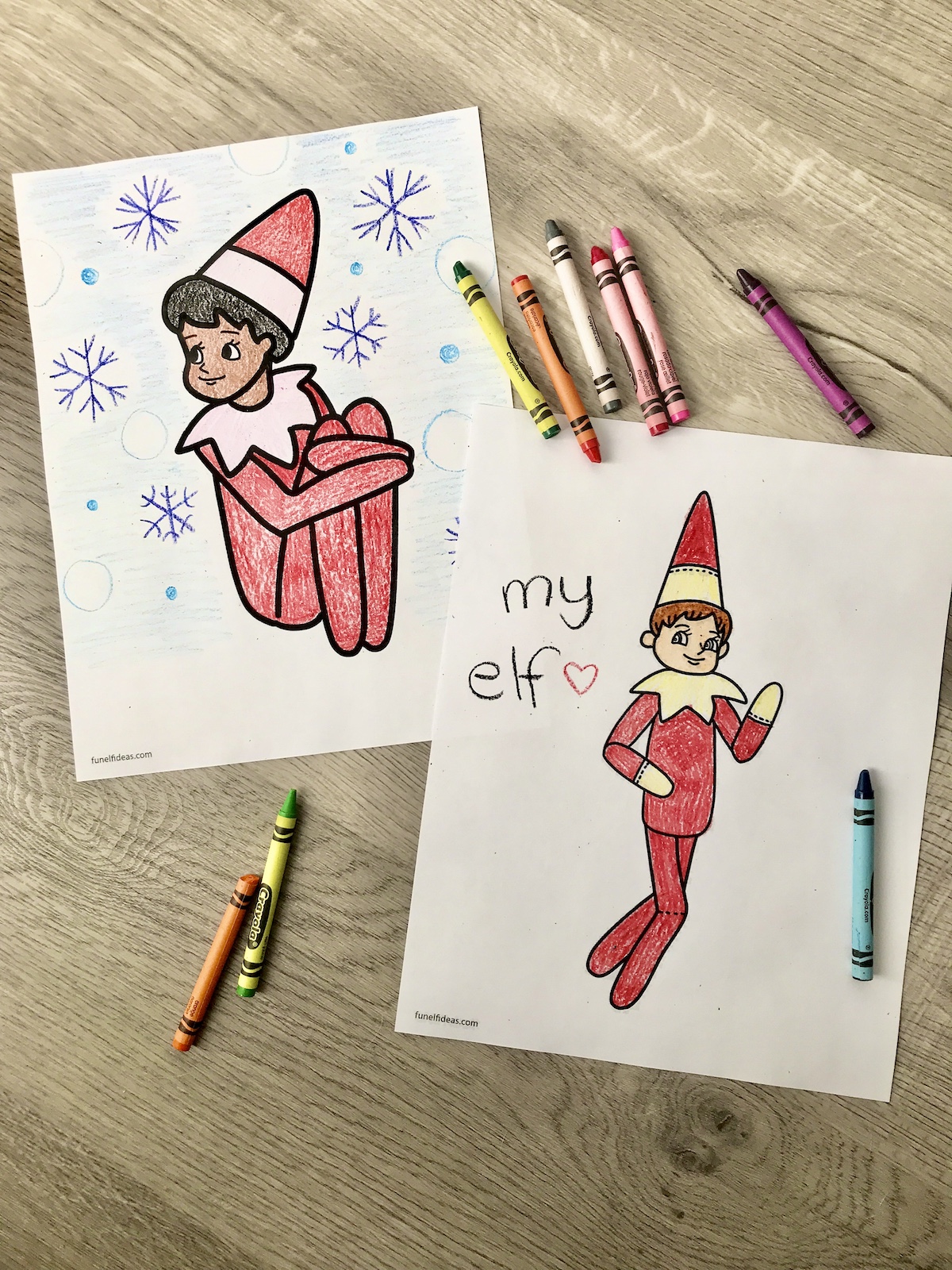Have you been wondering what is this elf on the shelf phenomenon that’s become popular in the United States and United Kingdom in the last few years?
In this post, I’ll explain the history of the quaint retro elf decorations and how they became their own holiday tradition.
Where Did Christmas Elves Come From?
As you may have guessed, elves have not been part of Christmas traditions for very long. However, European folk stories often involve small human like creatures such as elves, fairies or gnomes.
These stories are especially prevalent in Nordic countries: Norway, Sweden, Finland, and Iceland and even nowadays remain popular in folk culture.
Elves made their way into Christmas traditions via the well-known poem “The Night Before Christmas” (which is actually entitled, “A Visit From St. Nicholas” and published in 1823) by American writer, professor, and scholar Clement Clarke Moore. Moore wrote the piece for his children and in it refers to Santa Claus as a “jolly old elf.”
Soon enough, other works of fiction began associating elves as Santa’s helpers.

In 1932, Disney created a short animated film called “Santa’s Workshop” which also depicted elves:
https://youtu.be/6SByVFS5EK8
Knee Hugger Elves
In the 1950’s, skilled factory workers in US-occupied Japan began creating a wide variety of Christmas decorations primarily for the American market. These included Christmas tree ornaments made of blown glass, porcelain, wood, and other materials, and decorations for other parts of the room, such as stockings, banners, and – you guessed it – elves.
Often called “knee hugger elves” because of the way you could prop them up to sit by making them hold on to their knees, these little dolls were the perfect little elves to place on a shelf, mantle, or on top of the TV.
These first elves on the shelves were endeared by millions of families and you can still find them on eBay, sometimes in large collections.
In 2005, the book “The Elf On The Shelf: A Christmas Tradition” became a bestseller in the US and helped re-kindle the popularity of the kitschy 1950’s style knee hugger elves. The book describes a tradition in which Santa has sent an elf to the child’s house to observe the child’s behavior and report back to Santa.
While there’s been some backlash against the idea of a “spying elf” or of the notion that this new elf tradition is just getting kids used to the idea of being under surveillance, each family can choose how their own family experience’s the elf and how it interacts with the family.
Indeed for many families, the visitor elf isn’t meant to spy on kids at all, but solely as a bit of holiday entertainment. Seeing the elf’s humorous behavior (the elves are often getting into mischief!) can make kids look forward to discovering it each morning during the winter season.
Elf On The Shelf is Here to Stay
Now you have a better understanding of what the elf on the shelf is – from where it comes from, to why it has become popular in recent years, and how you can create this tradition in your own family!





The idea of a spying elf is not a new tradition. In Scandinavia it was familiar already in the 17th century, and spying Christmas elves are about as old as Visit from St. Nicholas.
Yes, the spying elf is indeed a very old tradition in Scandinavia, although it is a relatively new one in North America. Thank you for stopping by. 🙂